 Paranormal America This page intentionally left blank Paranormal America Ghost Encounters, UFO Sightings, Bigfoot Hunts, and Other Curiosities in Religion and Culture Christopher D. Bader, F. Carson Mencken, and Joseph O. Baker a N E W Y O R K U N I V E R S I T Y P R E S S New York and London N E W Y O R K U N I V E R S I T Y P R E S S New York and London www.nyupress.org 2010 by New York University All rights reserved Library of Congress Cataloging-in-Publication Data Bader, Christopher David. Paranormal America : ghost encounters, UFO sightings, Bigfoot hunts, and other curiosities in religion and culture / Christopher D. Bader, F.
Paranormal America This page intentionally left blank Paranormal America Ghost Encounters, UFO Sightings, Bigfoot Hunts, and Other Curiosities in Religion and Culture Christopher D. Bader, F. Carson Mencken, and Joseph O. Baker a N E W Y O R K U N I V E R S I T Y P R E S S New York and London N E W Y O R K U N I V E R S I T Y P R E S S New York and London www.nyupress.org 2010 by New York University All rights reserved Library of Congress Cataloging-in-Publication Data Bader, Christopher David. Paranormal America : ghost encounters, UFO sightings, Bigfoot hunts, and other curiosities in religion and culture / Christopher D. Bader, F.
Carson Mencken, and Joseph Baker. p. cm. Includes bibliographical references (p. ) and index. paper) ISBN 978-0-8147-9135-6 (pb : alk. paper) ISBN 978-0-8147-8642-0 (e-book) 1. paper) ISBN 978-0-8147-8642-0 (e-book) 1.
Parapsychology United States. 2. Curiosities and wonders United States. I. Mencken, Frederick Carson, 1964 II. Title. Title.
BF1028.5.U6B34 2010 130.973 dc22 2010016525 New York University Press books are printed on acid-free paper, and their binding materials are chosen for strength and durability. We strive to use environmentally responsible suppliers and materials to the greatest extent possible in publishing our books. Manufactured in the United States of America c 10 9 8 7 6 5 4 3 2 1 p 10 9 8 7 6 5 4 3 2 1 Contents v This page intentionally left blank We have so many people to thank for their help in this en deavor that we fear the attempt. Someone will certainly be forgotten. Th e quantitative data presented in this book are based upon the Baylor Religion Survey, Waves 1 and 2, collected in 2005 and 2007. Th e develop ment and collection of these data involved the eff orts of many people.
Th e Baylor Religion Survey project was fi nancially supported by a generous grant from the John Templeton Foundation. Th e development of survey content was the result of a collaborative eff ort with our colleagues in the Department of Sociology at Baylor University. Finally, the Gallup Organization provided valuable feedback on the fi nal questionnaire and ultimately collected these data. Th roughout the book we frequently use pseudonyms for those we spent time with, and these names are in quotation marks for the fi rst mention. We do so when the person has not publicly disclosed their paranormal beliefs and/or experiences, unless they have expressly stated a willingness to be identifi ed. Cheryl and Colleen of the Dallas Psychic Fair were quite welcoming and willing to answer our many questions about psychic readings.
Th e late Datus Perry of Carson, Washington, spent many hours ushering the fi rst author through the woods looking for Bigfoot. We greatly appreciate Laura Cyrs willingness to tell us of her many supernatural and paranormal experiences. We are equally grateful that the UFO Contact Center International opened its doors to our questions and to Paul Ingram for telling us his harrowing experience with the Satanic panic of the 1990s. Duane, owner of the Big Cypress Coff ee House in Jeff erson, Texas, proved a charming and puckish host. Depending upon your beliefs about ghosts, the psychics Gloria and Lee and the ghost hunter Victoria may have pre vented us from being attacked by angry spirits at the coff ee house. We enjoyed their company and appreciated their protection in theory.
Th e vii viii Acknowledgments Texas Bigfoot Research Conservancy (TBRC) was extremely patient drag ging three sociologists through the woods on one of their fi eld operations, and we greatly enjoyed getting to know David, Craig Woolheater, and the many other members of the TBRC. Numbers can only get you so far we did not believe we could tell a story about American paranormal beliefs without hearing from people who have experienced the paranormal for themselves. We are greatly in debt to the many people who gave us their trust and their time. Several people read draft s of this book. We must thank Jennifer Ham mer of NYU Press, author and paranormal researcher Nick Redfern, and Kim Mencken for providing valuable suggestions, edits, and comments. Finally, engaging in such a project requires support at home.
Th e au thors would like to thank their spouses Sara Bader, Kim Mencken, and Amy Edmonds for their love, patience, and understanding as we spent the night in haunted houses, chased Bigfoot, and delved into UFO abduc tions and psychic phenomena. Situated on Big Cypress Bayou in the piney woods of northeast Texas lies the city of Jeff erson, a haven for ghost hunters. Before the railroads moved into the northern part of the state, Texans were dependent upon boat traffi c to receive goods and supplies. Jeff erson was founded in 1840 at the perfect location for a port. Boats traveled up the Mississippi River to the Red River, which fed into nearby Caddo Lake. Even large stern wheelers could paddle through the lake to its eventual meet-up with Big Cypress Bayou.
By default the town held a monopoly on shipping for hundreds of miles around. Cotton moved through by the ton. During the Civil War, the Confederacy depended upon the Jeff erson port to provide Texas troops with supplies. Stores, hotels, shipping companies, and other signs of a bustling economy competed for downtown real estate with taverns, cathouses, pool halls, and other necessary vices of a nineteenth-century boomtown. Indeed, the good and the bad appeared in equal measure during Jeff ersons heyday. Th e population swelled to nearly eight thousand by 1872.
Grand homes appeared on the hills. At the same time, fi ghts at the local bars were frequent with an especially dangerous area near the river earning the nickname Murder Alley. As the railroad came and reliance on river traffi c eroded, so did Jef fersons fragile economy.1 Shipping companies folded; the population dwindled over the years to about two thousand citizens; houses sat empty and the taverns closed; a bayou formerly alive with the sounds of steam-boats and dock workers, became silent. Its a familiar story of the American frontier: a boomtown gone bust. Jeff erson today is bucking that trend. Its cobblestone streets are lined with quaint, locally owned shops, hotels, and bed-and-breakfasts, and on weekends the town center buzzes with activity.
Even midweek a surprising number of people meander around the antique stores, restaurants, and gift shops. 2 Th e House of 150 Ghosts Jeff ersons resurgence is due at least in part to the ghosts of its sometimes violent past. Purported to be one of the most haunted locales in Texas, nearly every major downtown building and many of the sur rounding homes claim spirit manifestations. Guests at the historic Jeff erson Hotel, dating to 1851, report mysterious footsteps at night, faucets that turn on and off by themselves, and the laughter of unseen children. Visitors frequently request the most haunted rooms. Nearby is the Excelsior Hotel, where the fi lmmaker Steven Spielberg is said to have been frightened away by a ghostly child.2 A Ghost Train operates from the depot during the tourist season.
Th e Grove, a historic home, provides tours on Sunday mornings for those hoping to spot its several resident ghosts, which include a woman and priest in the house as well as a sinister smil-ing man who roams the gardens. With few exceptions, the town has ac cepted its ghostly reputation. Th e Jeff erson Hotel knows that spirits are good for business and proudly promotes each new reported encounter on its Web page.3 Jodi Breckenridge, a local resident, is one of the biggest benefi ciaries of Jeff ersons ghosts. For several years she has led a nighttime, walking ghost tour. On a busy weekend sixty people (more during the Halloween season) follow the aff able Jodi through the city streets and into the surrounding residential areas. Christopher joined an excited group of about thirty on a November Saturday evening.
Next page

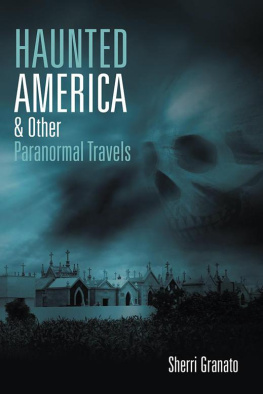

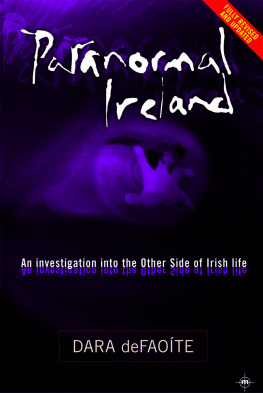
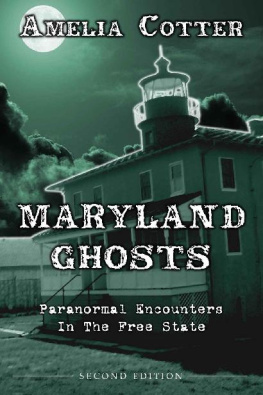
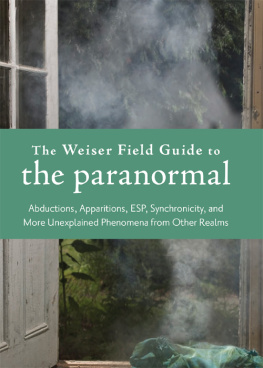
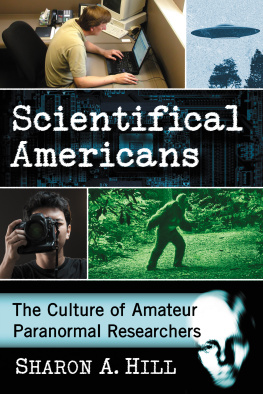
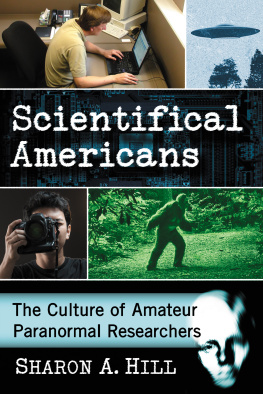
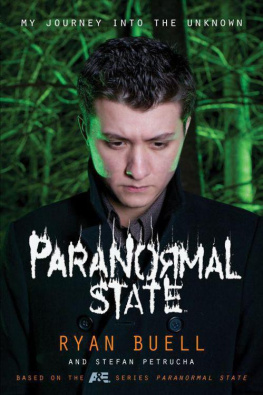
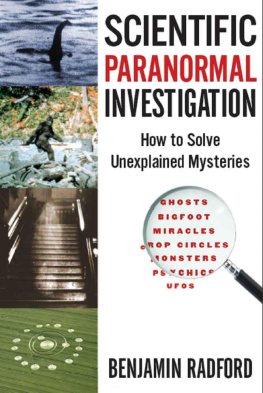
 Paranormal America This page intentionally left blank Paranormal America Ghost Encounters, UFO Sightings, Bigfoot Hunts, and Other Curiosities in Religion and Culture Christopher D. Bader, F. Carson Mencken, and Joseph O. Baker a N E W Y O R K U N I V E R S I T Y P R E S S New York and London N E W Y O R K U N I V E R S I T Y P R E S S New York and London www.nyupress.org 2010 by New York University All rights reserved Library of Congress Cataloging-in-Publication Data Bader, Christopher David. Paranormal America : ghost encounters, UFO sightings, Bigfoot hunts, and other curiosities in religion and culture / Christopher D. Bader, F.
Paranormal America This page intentionally left blank Paranormal America Ghost Encounters, UFO Sightings, Bigfoot Hunts, and Other Curiosities in Religion and Culture Christopher D. Bader, F. Carson Mencken, and Joseph O. Baker a N E W Y O R K U N I V E R S I T Y P R E S S New York and London N E W Y O R K U N I V E R S I T Y P R E S S New York and London www.nyupress.org 2010 by New York University All rights reserved Library of Congress Cataloging-in-Publication Data Bader, Christopher David. Paranormal America : ghost encounters, UFO sightings, Bigfoot hunts, and other curiosities in religion and culture / Christopher D. Bader, F.